Vintage gear, rare antique Harleys and Indians with no brakes, invitation-only races, leather helmet for protection – this is board-track racing. This type of motorcycle racing had its golden age in the 1910s and 1920s in the U.S. but board tracks proliferated in part because they were inexpensive to construct. 70 years later, the sport experiences a revival in Europe – where this type of racing actually was born.
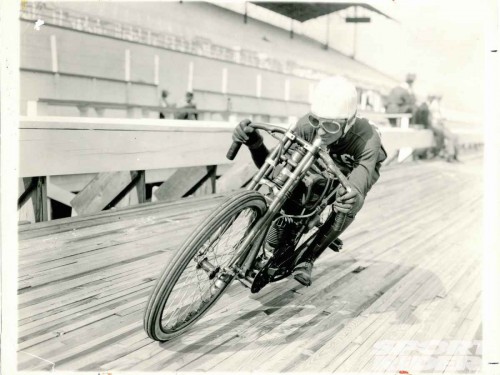
It was a truly mesmerizing era of motorcycle racing
Board-track racing was very popular in the United States during the 1910s and 1920s but the sport was actually born in Europe. Races were held on circular or oval race courses composed of wooden planks or sometimes cement. These tracks were called motordromes or velodromes and were being used by cars, too. 100 years ago, there was an overwhelmingly large numbers of wood and cement tracks, almost every larger town got his own track. The sport was invented in France in 1900, followed by Germany and England in 1902. The first board track of the U.S. was built in Los Angeles around 1910.
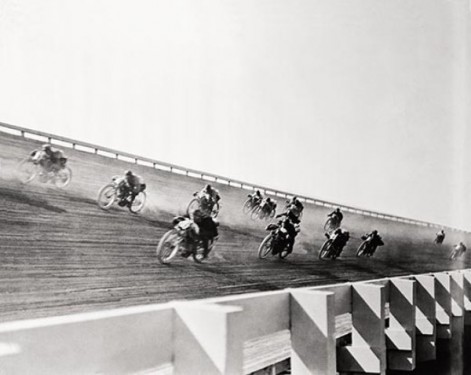
Race on a wood track
These tracks offered motorcycle manufacturers a perfect opportunity to show their newest machines and compare the performance of their engines with the competition. The riders were heroes for the crowd – their only protection was a leather helmet while racing with 60-80 mph on tracks with turns banked at up to 45-50 degrees. By 1915, motorcycles reached a top speed of 100 miles per hour on these short tracks. Manufacturers and riders adapted quickly to this type of racing – the bikes were getting more powerful, had neither front nor rear brakes, and no transmission. The only way to stop the bike was cutting off the engine with a kill switch. This resulted in spectacular races and a lot of crashes.
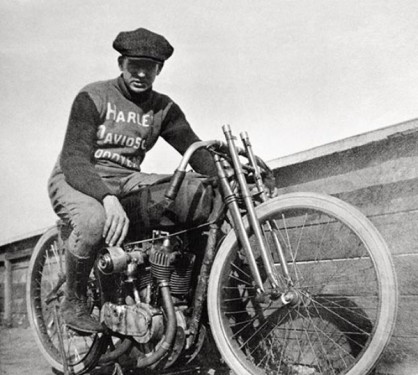
Ashley Franklin Van Order in 1912
The sport has its golden era in the 1920s in the United States. By 1929, at least 24 board tracks had been built around the country. During this time, these races drew a crowd of 60-80.000. That’s no surprise since races were spectacular – and dangerous. The bikes had no brakes and were capable of doing 90-100 miles per hour. High cornering speeds, high G-forces meant a large number of fatalities. There was another problem: when motorcycles crashed, flying wood splinters and debris caused even more injuries and because spectators were sitting above the riders, when a rider lost control, he could slip up off the track and into the crowd. By the end of the 1920s, the manufacturers withdrew their support due to the negative publicity. With the Great Depression, this type of racing disappeared completely. By 1931, 20 of the 24 new tracks had been shut down or abandoned. From 1932, the championship got cancelled. The last track closed its gates in the 1940s in New York. The reign of the boardtracks was over.
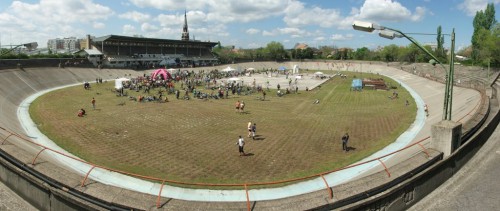
The velodrome nowadays in Budapest, Hungary
If you are looking for a vintage helmets, see this Leather Brown Motorcycle Goggles Vintage Garman Style Half Helmets Motorcycle Biker Cruiser Scooter Touring Helmet
70 years later, the sport is experiencing a revival in Germany. Two participants of the annual Hockenheim Classic event at the Formula One track, Thomas Bund and Andreas Wehrmann met in the pits and they quickly realised that they shared a love for board track racing. They stayed in touch after the event and two years later they began to meet regularly. The meetings continued and slowly more board-track riders began to join them and they started to visit other motordromes and velodromes around Europe. As the number of participants grew, they started to organize regular events and invitation-only races.
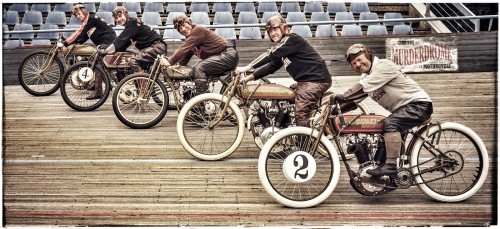
German riders on the vboard track in Hannover
But getting such a vintage bike is not easy so some of the riders began to build them themselves. Andreas has built a 1918 Harley-Davidson using an original engine that is mounted into a replica frame. True to the original racers, the bike has no brakes, no clutch and no transmission. This means he has to kickstart the bike so someone has to push him at the beginning of the race. There are other unique bikes from the beginning of the century, too, like Indians or Excelsiors.
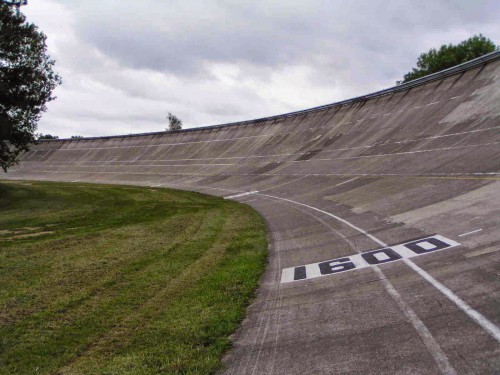
The turns are banked
If you are interested in vintage bikes and you like the sound of these classic V-Twins, you should google for the next board-track event across Europe. It’s pretty amazing to see and hear these century-old machines. You usually see such bikes in museums so don’t miss your chance!
If you are looking for vintage cruiser goggles, see this WWII Raf Vintage Pilot Motorcycle Biker Cruiser Goggles

